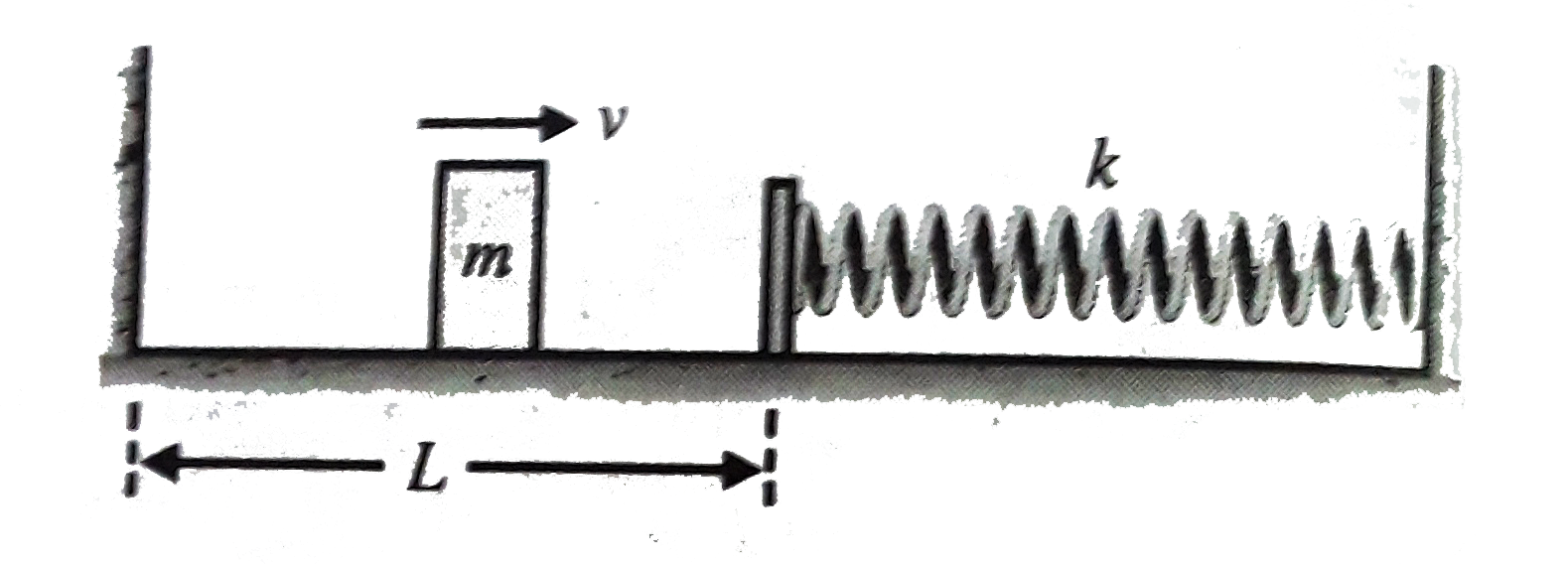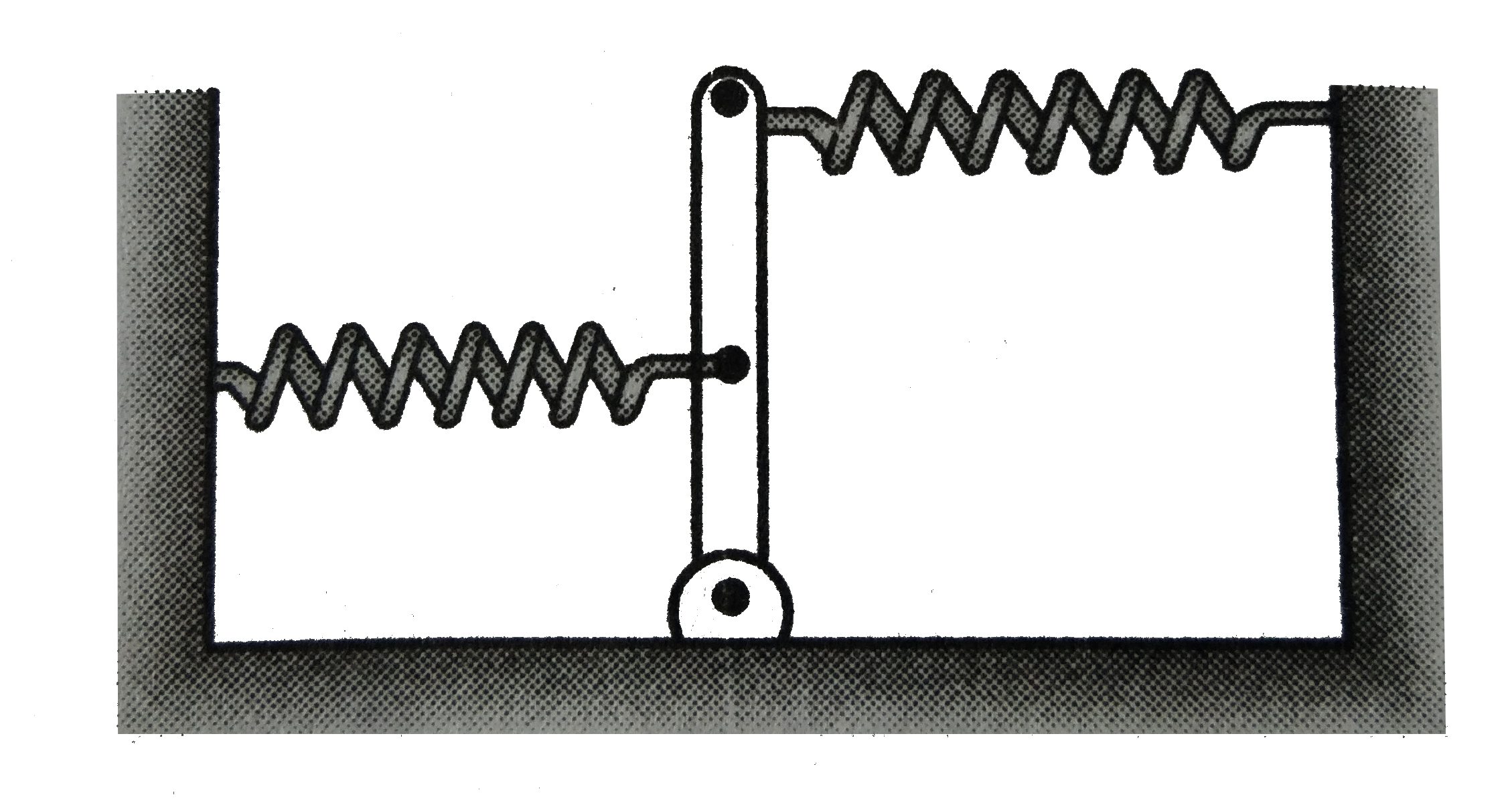A spring is stretched by applying a load to its free end. The strain produced in the spring is
volumetric
shear
longitudinal and shear
longitudinal.
The correct Answer is:C
To solve the problem regarding the strain produced in a spring when a load is applied to its free end, we will analyze the situation step by step.
1. Understanding the Setup:
- We have a spring that is being stretched by applying a load (let's denote it as W) at its free end.
2. Identifying the Type of Strain:
- When a load is applied to the free end of a spring, the spring experiences a change in length. This change occurs along the direction of the applied force, which is the length of the spring.
3. Defining Longitudinal Strain:
- Longitudinal strain is defined as the change in length (ΔL) divided by the original length (L₀) of the spring. Mathematically, it can be expressed as:
Longitudinal Strain=ΔLL0
4. Excluding Other Types of Strain:
- Shear Strain: This occurs when forces are applied parallel to the surface of an object, causing it to deform in a sliding manner. In our case, since the load is applied vertically, shear strain is not relevant.
- Volumetric Strain: This occurs when an object is subjected to uniform pressure from all sides, causing a change in volume. Since we are only stretching the spring along its length, volumetric strain is also not applicable.
5. Conclusion:
- Since the load causes the spring to stretch along its length, the strain produced in the spring is longitudinal strain.
Final Answer:
The strain produced in the spring is longitudinal strain.
---
- We have a spring that is being stretched by applying a load (let's denote it as W) at its free end.
- When a load is applied to the free end of a spring, the spring experiences a change in length. This change occurs along the direction of the applied force, which is the length of the spring.
- Longitudinal strain is defined as the change in length (ΔL) divided by the original length (L₀) of the spring. Mathematically, it can be expressed as:
Longitudinal Strain=ΔLL0
- Shear Strain: This occurs when forces are applied parallel to the surface of an object, causing it to deform in a sliding manner. In our case, since the load is applied vertically, shear strain is not relevant.
- Volumetric Strain: This occurs when an object is subjected to uniform pressure from all sides, causing a change in volume. Since we are only stretching the spring along its length, volumetric strain is also not applicable.
- Since the load causes the spring to stretch along its length, the strain produced in the spring is longitudinal strain.
The strain produced in the spring is longitudinal strain.
Topper's Solved these Questions
- MECHANICAL PROPERTIES OF SOLIDSBOOK - NCERT FINGERTPS ENGLISHCHAPTER - MECHANICAL PROPERTIES OF SOLIDSEXERCISE - CORNER
15 Videos
- MECHANICAL PROPERTIES OF SOLIDSBOOK - NCERT FINGERTPS ENGLISHCHAPTER - MECHANICAL PROPERTIES OF SOLIDSEXERCISE - Hooke'S Law
3 Videos
- MECHANICAL PROPERTIES OF SOLIDSBOOK - NCERT FINGERTPS ENGLISHCHAPTER - MECHANICAL PROPERTIES OF SOLIDSEXERCISE - HOTS
8 Videos
- MECHANICAL PROPERTIES OF FLUIDSBOOK - NCERT FINGERTPS ENGLISHCHAPTER - MECHANICAL PROPERTIES OF FLUIDSEXERCISE - NCERT Exemplar
5 Videos
- MOTION IN A PLANE BOOK - NCERT FINGERTPS ENGLISHCHAPTER - MOTION IN A PLANE EXERCISE - Assertion And Reason
15 Videos
Similar Questions
In the situation shown in figure all contact surfaces are smooth. The force constant of the spring is K. Two forces F are applied as shown. The maximum elongation produced in the spring is how many times of F/K (initially the spring is relaxed)?

View SolutionA spring has natural length 40cm and spring constant 500N/m. A block of mass 1kg is attached at one end of the spring and other end of the spring is attached to a ceiling. The block is relesed from the position, where the spring has length 45cm.
View Solution
Knowledge Check
Natural length of a spring is 60 cm and its spring constant is 4000 N/m. A mass of 20 kg is hung from it. The extension produced in the spring is (Take, g=9.8m/s2)
A4.9 cmB0.49 cmC9.4 cmD0.94 cm
Two springs have their force constants in the ratio of 3:4. Both the springs are stretched by applying equal force F. If elongation in first spring is x then elogation is second spring is
View Solution
A spring having a spring constant k is fixed to a vertical wall as shown in Fig. A block of mass m moves with velocity v torards the spring from a parallel wall opposite to this wall. The mass hits the free end of the spring compressing it and is decelerated by the spring force and comes to rest and then turns the spring is decelerated by the spring force and comes to rest and then turns back till the spring acquires its natural length and contact with the spring is broken. In this process, it regains its angular speed in the opposite direction and makes a perfect elastice collision on the opposite left wall and starts moving with same speed as before towards right. The above processes are repeated and there is periodic oscillation.
Q. What is the time period of oscillation ?
View SolutionA long spring is stretched by 3 cm and its potential energy is V . If the spring is stretched by 6 cm ,its potential energy will be
View SolutionA long elastic spring is stretched by 2cm and its potential energy is U. If the spring is stretched by 10cm, the PE will be
View SolutionA string of length 40 cm and weighing 10 g is attached to a spring at one end and to a fixed wall at the other end. The spring has a spring constant of 160Nm−1 and is stretched by 1.0 cm. If a wave pulse is produced on the string near the wall, how much time will it take to reach the spring ?
View SolutionA string of length 40 cm and weighing 10 g is attached to a spring at one end and to a fixed wall at the other end. The spring has a spring constant of 160Nm−1 and is stretched by 1.0 cm. If a wave pulse is produced on the string near the wall, how much time will it take to reach the spring ?
View SolutionA rod of length l and mass m, pivoted at one end, is held by a spring at its mid - point and a spring at far end. The spring have spring constant k. Find the frequency of small oscillations about the equilibrium position.

View Solution
